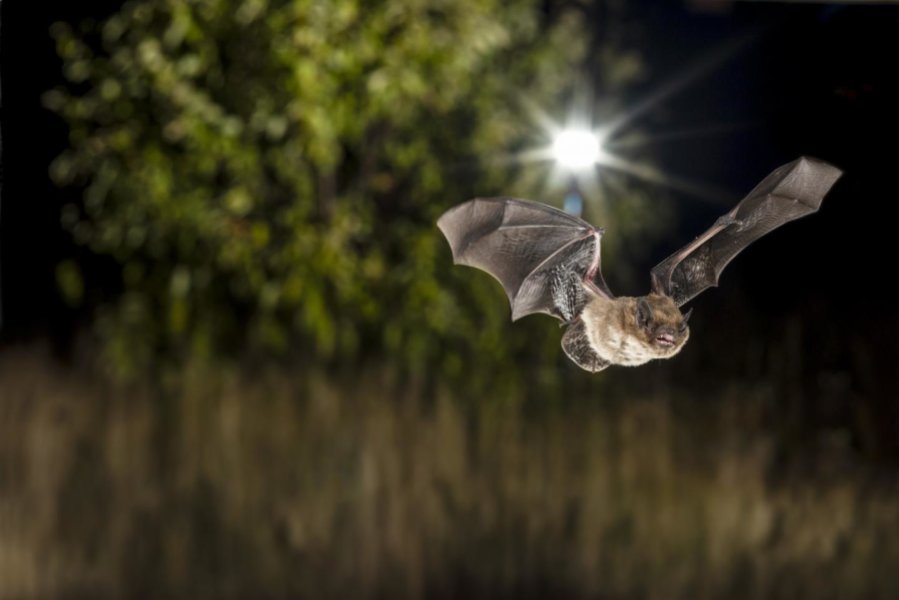The impacts of artificial light on wildlife have been a study focus for biodiversity researchers. On Earth Day, let’s look into how different street lights affect bats activities.
A team at the Leibniz Institute for Zoo and Wildlife Research (Leibniz-IZW) has conducted a study to find out how UV emitting and non-UV emitting street lamps influence the activity of bats in the Berlin metropolitan area and whether tree cover might mitigate any effect of light pollution. The study is published in the scientific journal “Frontiers in Ecology and Evolution.”
Nocturnal animals such as bats may suffer from the detrimental effects of artificial light generated by street lamps, a phenomenon now recognized as light pollution. The research team learned that the reactions of bats to light pollution were complex, noting that bats are more active in the areas with more UV emitting street lights as bats feed on insects that might be attracted by UV emitting street lights.

(Image: Christian Giese/ Leibniz-IZW)
The study also included the variables of tree coverage and indicated that trees provide shade for bats in illuminated areas. The team found that the response of bats to artificial light was intensified in areas with high tree cover. UV street lights would attract insect from the trees and lead to more Pipistrellus bat activities. On the other hand mouse-eared bats were less frequently recorded in areas with a high number of street lamps (irrespective of UV or no UV emission) and lots of trees. Mouse-eared bats seem to be particularly light-sensitive and avoid illuminated areas even when these include trees or shrubs. The study also showed that high-flying insectivorous bats were more active in areas when the light emission from LED street lanterns was dampened by a high tree coverage than in areas with many LED lanterns and no trees.
“LED lights do not attract large numbers of insects and therefore they are not attractive as foraging grounds for high-flying bats; they might even be repelled by light spillover from LED lamps. Tree cover seems to reduce light spillover, which enables high-flying bats to fly in the shadow of the tree canopy,” explained Tanja Straka, scientist at the IZW’s Department of Evolutionary Ecology and first author of the study.
These results are based on the analysis of more than 11,000 bat calls recorded during three months at 22 sites in the Berlin city area. Bat calls were identified by species and the activity of bats was calculated for each species and site. These data were compared with features of the landscape, such as tree cover and the intensity of light pollution as estimated by remote sensing. In addition, the exact location of street lamps and information on UV light emission was used to estimate the level of light pollution in the study area.





 CN
TW
EN
CN
TW
EN






